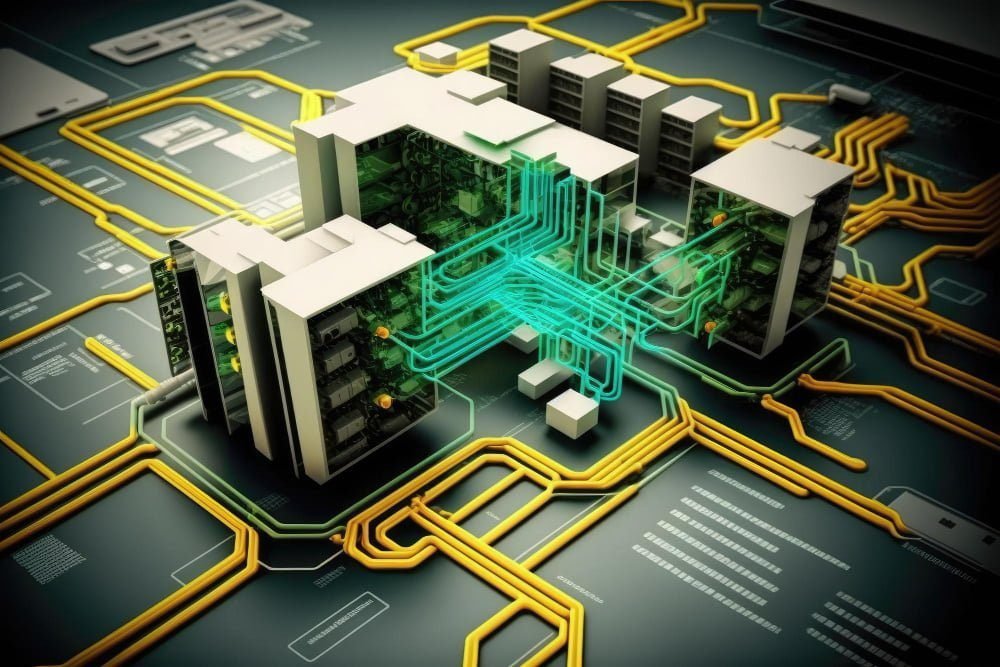
The landscape of software development has evolved significantly, and one of the key methodologies that have emerged is the use of microservices architecture. This approach, combined with DevOps practices, offers a myriad of benefits, especially for e-commerce websites and businesses. Let’s delve into what microarchitecture is, its benefits, and how it can transform the e-commerce sector.
What is Microarchitecture?
Microarchitecture, or microservices architecture, is a design approach where a large application is broken down into smaller, independent services. Each service focuses on a particular business function and can be developed, deployed, and scaled independently. These services communicate with each other through well-defined APIs.
Benefits of Microarchitecture in DevOps
- Scalability:
- Independent Scaling: Each microservice can be scaled independently based on its needs. For example, in an e-commerce site, the product catalog service can be scaled differently from the user authentication service based on the demand.
- Efficient Resource Utilization: Optimizes the use of computational resources, reducing costs.
- Agility and Speed:
- Faster Development Cycles: Teams can work on individual microservices concurrently, leading to faster development and deployment.
- Reduced Downtime: Smaller, isolated changes mean updates can be deployed without affecting the entire system, leading to reduced downtime.
- Resilience:
- Fault Isolation: If one microservice fails, it doesn’t affect the other parts of the application, ensuring better overall system reliability.
- Graceful Degradation: The system can continue to operate in a limited capacity even when some services are down.
- Flexibility:
- Polyglot Programming: Different microservices can be written in different programming languages, allowing teams to choose the best tool for each job.
- Technology Stack Independence: Teams can adopt new technologies incrementally without having to overhaul the entire system.
- Continuous Integration and Continuous Deployment (CI/CD):
- Automated Pipelines: Each microservice can have its own CI/CD pipeline, allowing for rapid and reliable delivery of updates.
- Consistent Deployments: Ensures consistent and error-free deployments through automated processes.
How Microarchitecture Helps E-commerce Websites/Businesses
- Improved Customer Experience:
- Responsive and Fast: Microservices can quickly adapt to user demand, providing a faster and smoother shopping experience.
- Personalization: Allows for more personalized customer interactions by efficiently managing user data and preferences.
- Enhanced Security:
- Isolated Services: Each microservice handles specific data, reducing the risk of a single point of failure and improving overall security.
- Granular Access Control: Enables more precise access control and monitoring for each component of the application.
- Rapid Feature Development and Deployment:
- Shorter Time to Market: New features can be developed and deployed independently, accelerating innovation and responsiveness to market changes.
- A/B Testing and Experimentation: Easier to implement A/B testing for individual services, aiding in data-driven decision-making.
- Operational Efficiency:
- Easier Maintenance: Smaller, well-defined services are easier to manage, debug, and maintain.
- Dynamic Scaling: Quickly scale services up or down in response to traffic patterns, optimizing costs and performance.
- Business Agility:
- Adaptability: Quickly adapt to new business requirements, market trends, or customer feedback, ensuring the business remains competitive.
- Reduced Time and Cost: Efficient resource utilization and faster development cycles reduce operational costs and time to market.
Real-World Example
Take Amazon, for example. They transitioned to a microservices architecture, enabling them to handle massive amounts of traffic, develop new features rapidly, and provide a high level of reliability and scalability.
Conclusion
Incorporating microarchitecture within a DevOps framework offers numerous benefits for e-commerce websites and businesses. From improved scalability and resilience to faster development cycles and enhanced security, this combination fosters a dynamic, responsive, and efficient operational environment. For any e-commerce business aiming to stay competitive and responsive to customer needs, adopting microservices architecture built on DevOps principles is a strategic move towards sustainable growth and success.
